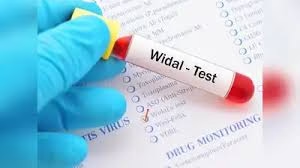
Introduction Medical microbiology is a branch of microbiology that studies microorganisms (such as bacteria, viruses, fungi, and parasites) that cause human diseases. It focuses on understanding these pathogens, their life Read More …
Simplifying Allied Health Learning.

Introduction Medical microbiology is a branch of microbiology that studies microorganisms (such as bacteria, viruses, fungi, and parasites) that cause human diseases. It focuses on understanding these pathogens, their life Read More …

Introduction The Widal test is a serological diagnostic method widely used to identify typhoid and paratyphoid fevers, collectively known as enteric fever. The bacteria Salmonella typhi and Salmonella paratyphi cause these diseases. The Read More …

Introduction The ABO blood group system is the most important classification used for blood transfusions, categorizing human blood into four main types: A, B, AB, and O. This classification is Read More …

Introduction Enzymes are biological catalysts—usually proteins—that speed up chemical reactions in living organisms without being consumed in the process. Definition: “Enzymes are biological macromolecules (mostly proteins) that act as catalysts Read More …

Introduction Medical laboratory instruments and equipment play a vital role in the accurate diagnosis, monitoring, and treatment of diseases. These tools, ranging from simple microscopes and centrifuges to advanced analyzers Read More …